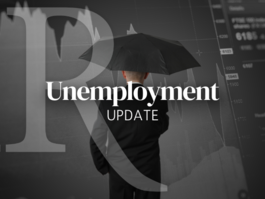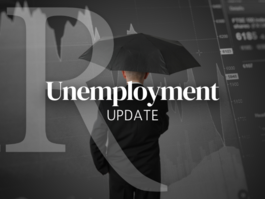More Voters Than Ever Worry the Government Will Not Do Enough to Help the Economy
On the heels of the downgrade of the U.S. credit rating, unhappiness with the debt ceiling debates and more unemployment and housing woes, more voters than ever worry that the federal government will not do enough to help the economy.
A new Rasmussen Reports national survey finds that 49% of Likely U.S. Voters are more worried that the federal government will not do enough in reacting to the nation’s economic problems. That's the highest finding in nearly three years of surveying. Thirty-six percent (36%) are more worried that government will do too much to try to fix the economy, the lowest level of concern to date. Fifteen percent (15%) are not sure which worries them more. (To see survey question wording, click here.)
Last month, voters were evenly divided about which worried them more—the government doing too much or not enough. It will be in interesting to see whether the new findings indicate a shift in voter perceptions or are just a little statistical noise.
In September 2008, just after the collapse of Lehman Brothers, 63% feared the government would try to do too much to help repair the crumbling economy. Generally since then, however, those worried that the government will do too much has run in the high 40s and low 50s, while those who fear the government won't do enough have been in the high 30s and low 40s.
Still, voters remain clear on what they don't want the government to do. Over half (56%) still say the bailouts of the banks, auto and insurance companies were bad for the economy. Twenty-eight percent (28%) believe the bailouts were good for the economy, but another 17% are undecided. Those views haven't changed for months.
When it comes to job creation and improving the overall economy, voters think tax cuts will work better than government solutions. At the same time, 75% feel it is at least somewhat important for the government to launch a new program designed to create jobs, although 64% still believe decisions made by U.S. business leaders to help their own businesses grow will do more to create jobs than decisions made by government officials. Voters give mixed reviews to President Obama's new plan to create jobs for military veterans.
(Want a free daily e-mail update? If it's in the news, it's in our polls). Rasmussen Reports updates are also available on Twitter or Facebook.
The national survey of 1,000 Likely Voters nationwide was conducted on August 11-12, 2011 by Rasmussen Reports. The margin of sampling error is +/- 3 percentage points with a 95% level of confidence. Field work for all Rasmussen Reports surveys is conducted by Pulse Opinion Research, LLC. See methodology.
Rasmussen Reports is a media company specializing in the collection, publication and distribution of public opinion information.
We conduct public opinion polls on a variety of topics to inform our audience on events in the news and other topics of interest. To ensure editorial control and independence, we pay for the polls ourselves and generate revenue through the sale of subscriptions, sponsorships, and advertising. Nightly polling on politics, business and lifestyle topics provides the content to update the Rasmussen Reports web site many times each day. If it's in the news, it's in our polls. Additionally, the data drives a daily update newsletter and various media outlets across the country.
Some information, including the Rasmussen Reports daily Presidential Tracking Poll and commentaries are available for free to the general public. Subscriptions are available for $4.95 a month or 34.95 a year that provide subscribers with exclusive access to more than 20 stories per week on upcoming elections, consumer confidence, and issues that affect us all. For those who are really into the numbers, Platinum Members can review demographic crosstabs and a full history of our data.
To learn more about our methodology, click here.



